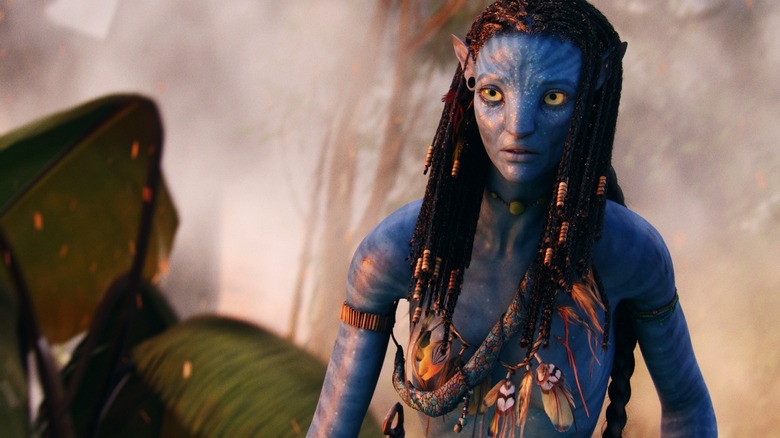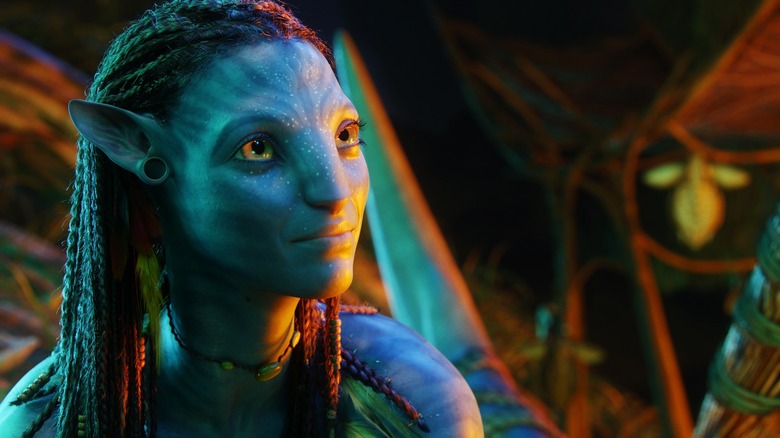
One would be hard-pressed to find an actress working today that could be considered more quantifiably successful than Zoe Saldaña. After runs in “Star Trek,” Marvel’s “Guardians of the Galaxy” franchise, and, perhaps most importantly, James Cameron’s “Avatar” films, she has established herself as both a powerhouse performer and someone who is consistently associated with financial success at the highest level. In short? She’s an actress who delivers the goods both on screen and at the box office. But for Saldaña, there remains a frustration with her work in the sci-fi genre, and particularly in “Avatar.”
In a recent profile piece for The Independent, Saldaña was discussing her work in the much-acclaimed “Emilia Pérez,” which arrived on Netflix in November. Saldaña is in the awards season conversation for her work in the film, and while that’s certainly a nice thing, the actress also reflected a bit on being overlooked for her performance in 2009’s “Avatar” and its 2022 follow-up, “Avatar: The Way of Water.” In her mind, the industry is clinging to old ideas in not recognizing motion capture performances compared to more traditional on-camera performances. Here’s what she had to say about it:
“Old habits die hard, and when you have old establishments, it’s really hard to bring forward change. And I understand that, so I’m not bitter about it, but it is quite deflating when you give 120 per cent of yourself into something. I mean, not winning is OK, not being nominated is OK, but when you’re overlooked and then minimized and completely disregarded…”
“Avatar” went on to become the highest-grossing movie of all time (twice), with more than $2.9 billion to its name to date. Only “Avengers: Endgame” ($2.79 billion) has come remotely close to matching that total. It was also nominated for quite a few Oscars in its day, including Best Picture, but mostly in the technical categories. The actors were shut out.
Avatar is more than just CGI, and Zoe Saldaña is proof of that
There has been a bit of an argument over motion capture in the industry for a couple of decades now. Andy Serkis completely changed the game with his performance as Gollum in “The Lord of the Rings.” Serkis would later take things to another level with his performance as Caesar in the “Planet of the Apes” films, and both performances failed to garner any Oscar nominations, but both films earned awards for their visual effects.
Are very talented technicians needed to fully bring those performances to life? Yes. But there’s a gigantic difference between a lifeless CGI creation and what Saldaña and the others did in “Avatar” or other blockbusters that hinge on motion capture performances. “I know the difference between that and what we did,” Saldaña added in the interview.
For my money, Saldaña and other actors have not been given their due for such performances. I’d argue she also didn’t get quite the credit she deserves for her role as Gamora in the “Guardians of the Galaxy” films, either. Luckily, the industry is changing in some ways. Angela Bassett scored a Best Supporting Actress nod for her work in “Black Panther: Wakanda Forever,” so at least comic book movies aren’t overlooked when warranted. Saldaña, speaking further, seems to have made peace with the lack of critical appreciation for her work as Neytiri:
“At some point you have to ask yourself: Why is it that I do what I do? Is it so others can give me approval? Or is it because I don’t want to do anything else?”
Who knows? Maybe by the time “Avatar: Fire and Ash” hits theaters next year, attitudes will change a bit. For now, Saldaña will just have to settle for being in the three highest-grossing movies of all time, and quite a few of the top 20.



Leave a Reply